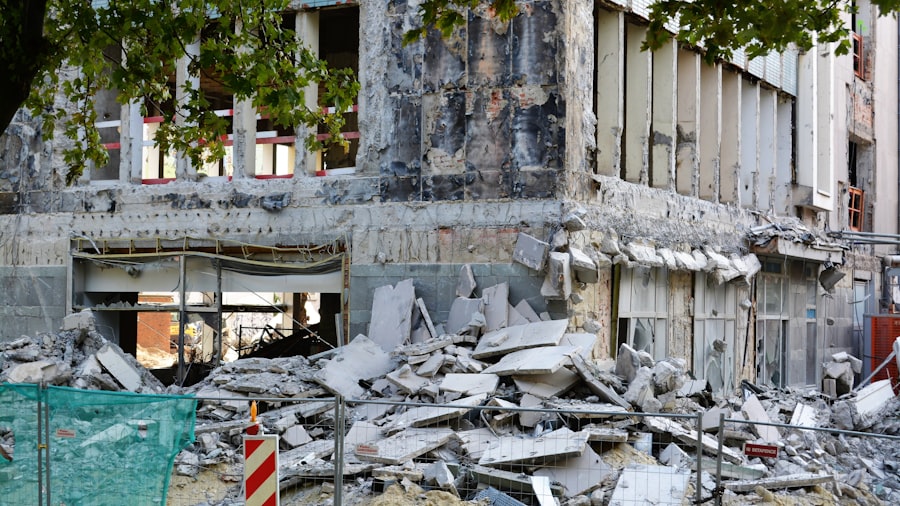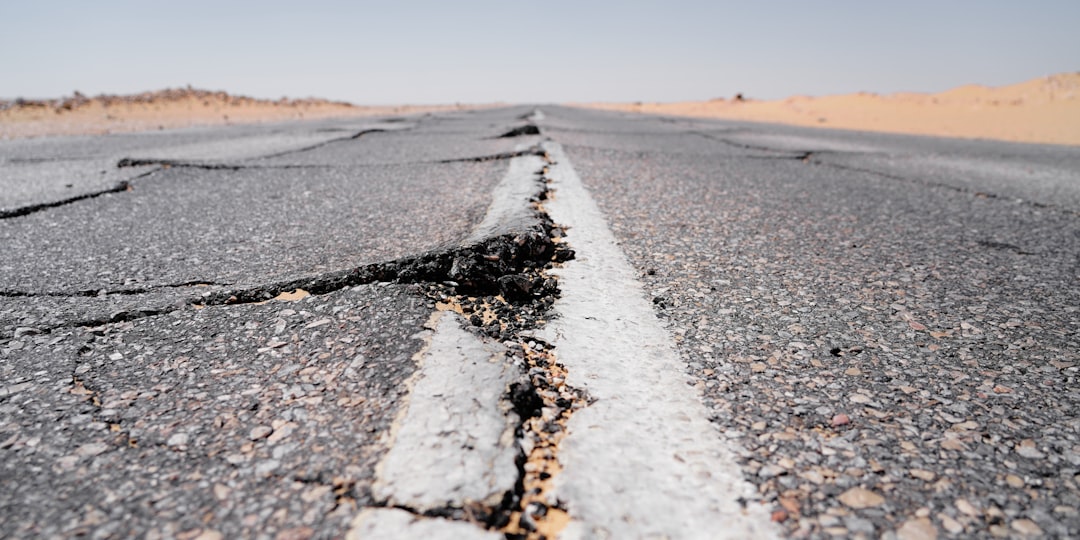The Drake Passage, a body of water located between the southern tip of South America and Antarctica, is known for its tumultuous seas and unpredictable weather. However, it is not just the natural elements that pose a threat; seismic activity in this region can lead to significant earthquakes. The Drake Passage earthquake, which occurred recently, has drawn attention due to its potential impact on both the environment and human activities in the surrounding areas.
This earthquake serves as a reminder of the geological forces at play beneath the Earth’s surface, particularly in regions where tectonic plates converge. Seismologists have noted that the Drake Passage is situated near the boundary of the South American and Scotia tectonic plates. This positioning makes it susceptible to seismic events, which can range from minor tremors to major quakes.
The recent earthquake was classified as a significant event, prompting concerns about its effects on marine life, shipping routes, and coastal communities. Understanding the geological context of such earthquakes is crucial for preparedness and response efforts, as it allows scientists and emergency management officials to anticipate potential risks and develop strategies to mitigate them.
Key Takeaways
- The Drake Passage Earthquake is a significant seismic event that requires immediate attention and response due to its potential impact on the surrounding areas.
- Immediate response and evacuation procedures should be followed to ensure the safety and well-being of individuals in the affected areas.
- Emergency shelter and accommodation options should be made available to those displaced by the earthquake, with a focus on providing basic necessities and comfort.
- Communication and information channels should be established and maintained to keep affected individuals informed and connected with relevant updates and support services.
- Medical assistance and first aid services should be readily accessible to address any injuries or health concerns resulting from the earthquake.
Immediate Response and Evacuation Procedures
In the wake of the Drake Passage earthquake, immediate response measures were activated to ensure the safety of individuals in affected areas. Emergency services were mobilized swiftly, with local authorities coordinating efforts to assess damage and provide assistance. Evacuation procedures were put into place, prioritizing vulnerable populations such as those living in coastal regions or near unstable structures.
The urgency of these actions was underscored by the potential for aftershocks and secondary hazards, such as tsunamis. Evacuation routes were established, and designated safe zones were identified to facilitate the orderly movement of people away from danger. Emergency personnel worked tirelessly to communicate these plans to residents, utilizing various channels to ensure that information reached everyone in a timely manner.
As the situation unfolded, it became clear that a well-coordinated response was essential for protecting lives and maintaining order during a chaotic time.
Emergency Shelter and Accommodation Options

As the immediate threat from the earthquake subsided, attention turned to providing emergency shelter for those displaced by the disaster. Temporary accommodations were set up in community centers, schools, and other public buildings that could serve as safe havens. These shelters were equipped with basic necessities such as bedding, sanitation facilities, and food supplies to support individuals and families who had lost their homes or were unable to return due to safety concerns.
In addition to physical shelter, efforts were made to create a supportive environment for evacuees. Volunteers and local organizations stepped up to provide emotional support and companionship to those affected by the earthquake. Recognizing that displacement can lead to feelings of isolation and anxiety, these initiatives aimed to foster a sense of community among evacuees.
By offering not just a roof over their heads but also a network of support, emergency shelters played a vital role in helping individuals cope with the aftermath of the disaster.
Communication and Information Channels
| Communication and Information Channels | Metrics |
|---|---|
| Number of emails sent/received | |
| Phone Calls | Number of calls made/received |
| Meetings | Number of meetings attended/organized |
| Instant Messaging | Number of messages sent/received |
Effective communication is paramount during any disaster response effort, and the Drake Passage earthquake highlighted this necessity. Authorities utilized multiple channels to disseminate information about safety measures, evacuation routes, and available resources. Social media platforms, local radio stations, and community bulletin boards became essential tools for keeping residents informed about ongoing developments.
Moreover, mobile applications designed for emergency alerts were employed to send real-time notifications directly to individuals’ devices. This technology allowed for rapid dissemination of critical information, ensuring that people remained aware of potential dangers such as aftershocks or changing weather conditions. The emphasis on clear and consistent communication helped alleviate confusion and anxiety among residents, fostering a sense of trust in the authorities managing the response efforts.
Medical Assistance and First Aid Services
In the aftermath of the earthquake, medical assistance became a top priority as injuries were reported among those affected by the disaster. Emergency medical teams were deployed to provide immediate care to individuals in need. Triage centers were established in strategic locations to assess injuries and prioritize treatment based on severity.
This approach ensured that those requiring urgent medical attention received it promptly while also managing resources effectively. In addition to treating physical injuries, mental health professionals were integrated into medical response teams to address psychological trauma resulting from the earthquake experience. The dual focus on physical and mental health underscored the understanding that disasters can have far-reaching effects on individuals’ well-being.
By providing comprehensive medical assistance that included first aid services and psychological support, responders aimed to promote holistic recovery for those impacted by the earthquake.
Food and Water Supplies

Access to food and clean water is critical in any disaster scenario, and the Drake Passage earthquake posed significant challenges in this regard. In the immediate aftermath of the quake, supply chains were disrupted, making it difficult for affected communities to obtain essential resources. Emergency management teams quickly mobilized to establish distribution points for food and water supplies, ensuring that those in need received adequate nourishment and hydration.
Local organizations collaborated with national agencies to coordinate relief efforts, sourcing food from nearby regions and utilizing donations from various sources.
The establishment of community kitchens further facilitated access to hot meals for evacuees residing in temporary shelters.
By prioritizing food security during this critical time, responders aimed to alleviate one of the most pressing concerns facing those affected by the earthquake.
Search and Rescue Operations
As part of the comprehensive response strategy following the Drake Passage earthquake, search and rescue operations were initiated promptly. Teams comprised of trained professionals and volunteers scoured affected areas for individuals who may have been trapped or injured amidst collapsed structures. Utilizing specialized equipment such as drones and thermal imaging technology enhanced their ability to locate survivors quickly.
The search efforts extended beyond immediate urban areas into more remote regions where landslides or other geological changes may have occurred due to seismic activity. These operations required meticulous planning and coordination among various agencies to ensure safety for both rescuers and those they sought to assist. The dedication displayed by search and rescue teams exemplified the spirit of community resilience in times of crisis.
Psychological Support and Counseling Services
Recognizing that disasters can leave lasting emotional scars, psychological support services were integrated into the overall response plan following the Drake Passage earthquake. Mental health professionals were deployed alongside medical teams to provide counseling services for individuals grappling with trauma or anxiety stemming from their experiences during the quake. Support groups were established within emergency shelters, allowing evacuees to share their feelings and experiences in a safe environment.
Trained counselors facilitated discussions aimed at helping individuals process their emotions while also providing coping strategies for managing stress. By prioritizing mental health alongside physical recovery efforts, responders acknowledged that healing from a disaster involves addressing both visible injuries and invisible wounds.
Transportation and Evacuation Plans
Transportation logistics played a crucial role in facilitating evacuation efforts following the earthquake. Authorities worked diligently to assess road conditions and identify safe routes for transporting individuals away from danger zones. Public transportation systems were mobilized to assist with evacuations, ensuring that those without personal vehicles could reach designated safe areas.
In addition to immediate evacuation plans, long-term transportation strategies were developed to support ongoing recovery efforts. This included restoring damaged infrastructure such as roads and bridges while also considering alternative transportation options for remote communities that may have been cut off due to landslides or flooding caused by aftershocks. By prioritizing transportation accessibility, officials aimed not only to ensure safety during evacuations but also to lay the groundwork for future recovery initiatives.
Financial and Material Aid for Affected Individuals
The economic impact of the Drake Passage earthquake was significant, prompting calls for financial assistance for affected individuals and families. Government agencies collaborated with non-profit organizations to establish funds dedicated to providing monetary aid for those who had lost their homes or livelihoods due to the disaster. These funds aimed to help individuals rebuild their lives while also addressing immediate needs such as housing costs or medical expenses.
In addition to financial aid, material assistance was organized through donation drives that collected clothing, household items, and other essentials for those displaced by the earthquake. Community members rallied together to support their neighbors during this challenging time, demonstrating solidarity in the face of adversity. By combining financial resources with material support, responders sought to empower individuals on their path toward recovery.
Long-term Recovery and Rebuilding Efforts
As initial response efforts transitioned into long-term recovery initiatives following the Drake Passage earthquake, a comprehensive rebuilding plan was developed with input from affected communities. This plan focused not only on reconstructing damaged infrastructure but also on enhancing resilience against future seismic events. Urban planners collaborated with engineers to design buildings that adhered to stricter safety standards while also considering environmental sustainability.
Community engagement played a vital role in shaping recovery efforts as residents voiced their needs and priorities during public forums. By involving those directly impacted by the disaster in decision-making processes, authorities aimed to foster a sense of ownership over rebuilding initiatives while also ensuring that solutions were tailored to local contexts. The long-term recovery phase emphasized not just restoration but also growth—transforming challenges into opportunities for building stronger, more resilient communities in the wake of adversity.
In conclusion, the response to the Drake Passage earthquake exemplified a multifaceted approach involving immediate action, community support, and long-term planning. From understanding seismic risks to providing essential services such as medical care and psychological support, each aspect played a crucial role in addressing both immediate needs and future resilience. As communities continue on their journey toward recovery, lessons learned from this experience will undoubtedly inform preparedness strategies for future seismic events in this dynamic region.
In the wake of the recent earthquake in the Drake Passage, emergency resources have been mobilized to address the immediate needs of affected areas. For those interested in understanding the geological dynamics of this region and the implications of such seismic events, a related article provides valuable insights. This article delves into the tectonic activities that characterize the Drake Passage and discusses the preparedness measures that can mitigate the impact of future earthquakes. For more detailed information, you can read the full article on MyGeoQuest.
WATCH NOW! Drake Passage: Earth’s Deadliest Waters Revealed
FAQs
What is the Drake Passage?
The Drake Passage is the body of water between the southern tip of South America and the northern tip of the Antarctic Peninsula. It is known for its rough seas and challenging sailing conditions.
What are emergency resources for earthquakes in the Drake Passage?
Emergency resources for earthquakes in the Drake Passage may include search and rescue teams, medical supplies, food and water supplies, temporary shelter, communication equipment, and transportation for evacuation.
Who provides emergency resources for earthquakes in the Drake Passage?
Emergency resources for earthquakes in the Drake Passage may be provided by national governments, international organizations such as the United Nations, non-governmental organizations (NGOs), and specialized disaster response teams.
How are emergency resources transported to the Drake Passage in the event of an earthquake?
Emergency resources for earthquakes in the Drake Passage may be transported by air, sea, or land, depending on the specific needs and logistics of the situation. This may involve the use of military aircraft, ships, and specialized relief supply chains.
What are the challenges of providing emergency resources in the Drake Passage?
Challenges of providing emergency resources in the Drake Passage may include the remote and harsh environment, limited infrastructure, unpredictable weather conditions, and the need for coordination among multiple stakeholders and organizations.
